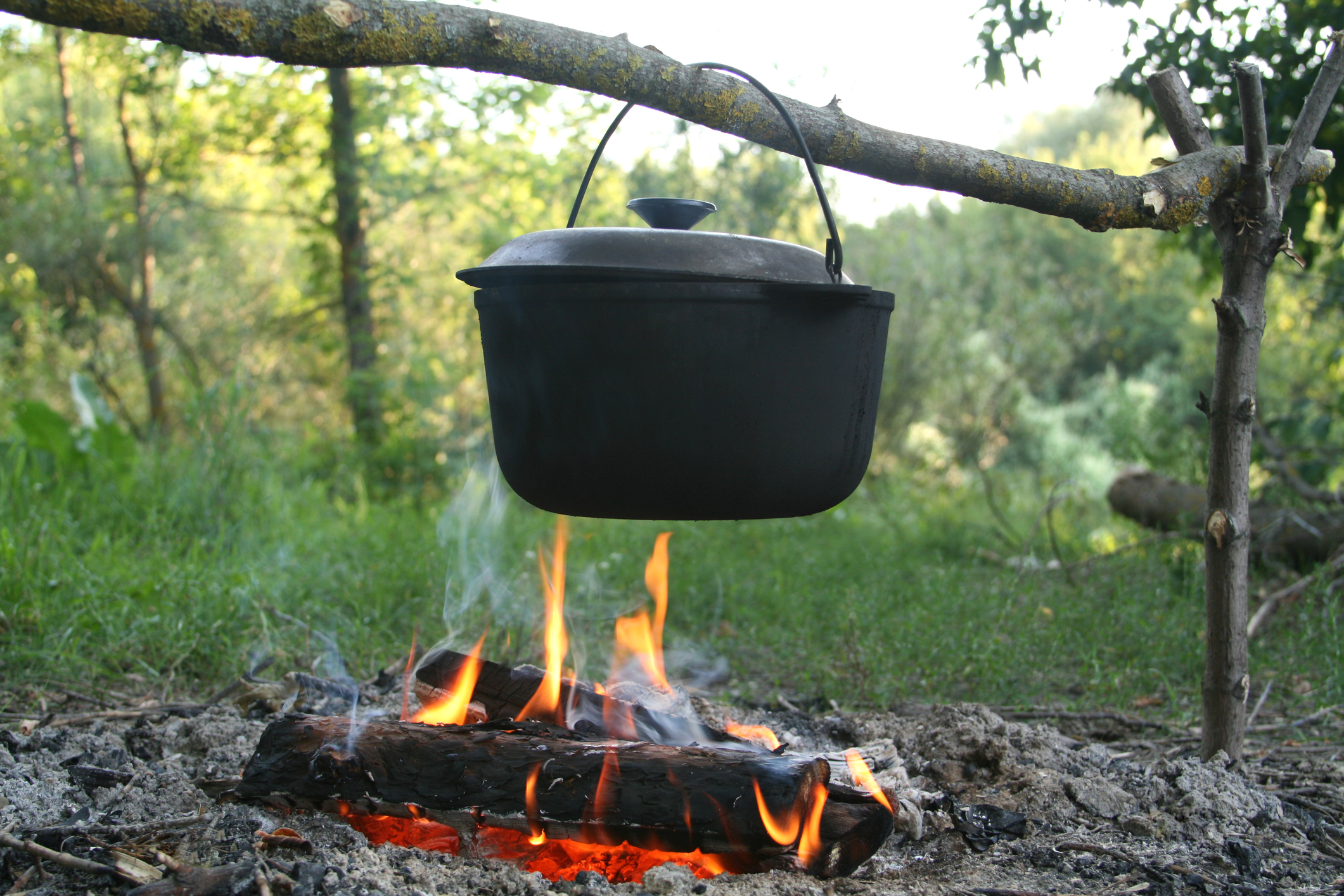Campers Once Again Join the Season's Timeless Melting Pot

Pack a cast iron pot for your family’s summer road trip and share a link with the pioneers who rumbled westward in the 1800s.
“Cooking with cast iron over a campfire is classic Americana,” said Laura Candler, social media coordinator for Lodge Cast Iron, a Tennessee-based cookware company.
Medieval blacksmiths made a living forging iron cookware and tales from the time period are littered with witches and wizards creating potions in iron cauldrons. Lewis and Clark toted iron pots and pans while exploring the land obtained by the Louisiana Purchase. The tool straddles the line between relic and irreplaceable accessory.
“Families were always looking for ways to make their wagons lighter during the journey, but ditching the cast iron pans was never considered,” said Candler. “They would find other items to part with, the pots and pans were too useful.”
Cast iron hasn’t endured all these years as simply a historical artifact. The cookware’s durability and versatility maintain relevance even in the age of microwaves and drive-thru establishments.
A 12-inch skillet can simultaneously cook a breakfast of bacon, potatoes and eggs. For dinner, that same pan can fry up the fish you caught in the lake, river or stream near the camp site. Cobblers, grunts and pineapple upside-down cake are among the classic desserts that can be quickly whipped up in the cookware, Candler said.
An ability to retain heat is one of cast iron’s best qualities. However, that means every square-inch becomes screaming hot, so the cookware must be handled with extreme care, warned Candler.
Hearty gloves or potholders are an absolute must-have, Candler said, as well as tongs or metal utensils to handle the food. A chimney starter to help build the fire, a windscreen to protect the flames and a trivet to set the skillet or Dutch oven on are other useful accessories.
Candler offered the following tidbits about cast iron cookware
- The more cast iron is used, the more its cooking surface improves. Tiny pores in the metal expand as the iron heats up, absorbing oils given off by the food. The pores contract and harden as the metal cools, retaining some of the oil’s flavor. The bond between the oil and the iron creates a natural easy-release surface.
- Cast iron can be used to fry, sauté, roast, broil, and braise. The material retains heat, making it a great choice for all-day cooking. Cast iron can handle both direct and indirect heat.
- Cast iron is easy to clean and requires minimal maintenance. Harsh detergents damage the pan’s seasoning. Hot water, a brush and a towel to dry the pan are all you need to clean cast iron after use. Don’t forget to dab a bit of vegetable oil in the pan and rub it down with a towel before putting it away.
- Joseph Lodge first crafted cast iron skillets in the Appalachian Mountains of Tennessee in 1896. The company bearing his name officially launched in 1910 and is operated by his direct descendants.